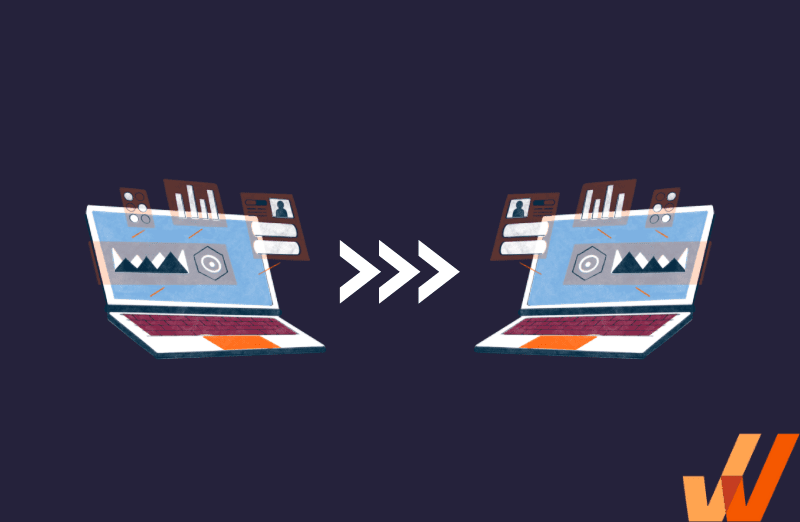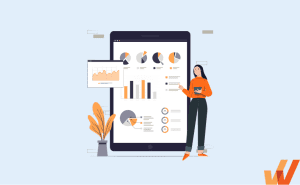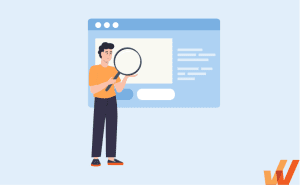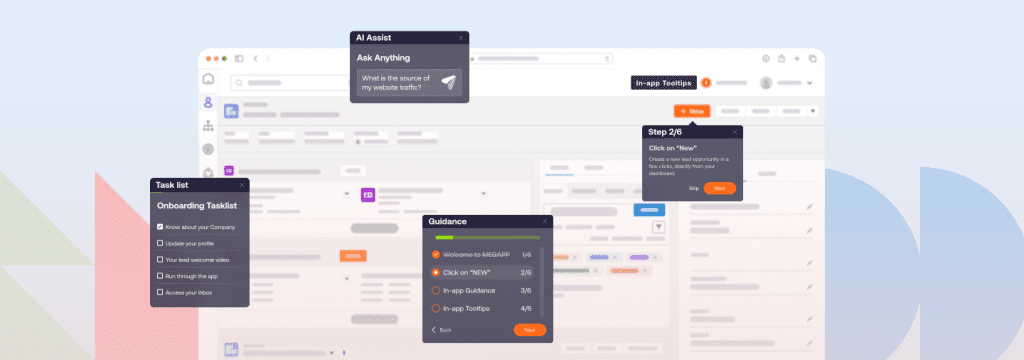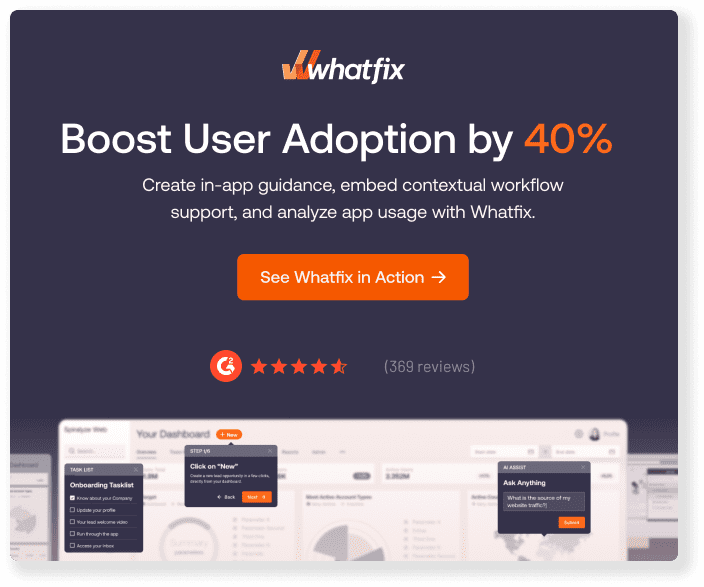Today’s employees need to continually update their skills to meet evolving job demands and traditional training programs are no longer enough. More than 80% of business leaders say they’re changing their workplace policies to offer greater flexibility, which means L&D programs must evolve to support learning that’s agile, digital, and built around the flow of work.
The first step is choosing the right employee training software that enables scalable onboarding, personalized upskilling, and measurable impact across teams and tools.
In this article, we’ll explore what to look for in modern training platforms, key features that matter for L&D leaders, and how to pair LMS and DAP to drive performance.
What Is Employee Training Software?
Employee training software refers to digital platforms that enable organizations to deliver, manage, and optimize workforce training at scale. These tools help HR, L&D, and operational teams create role-based learning paths, assign training programs, and track progress through analytics and completion metrics.
Modern employee training software goes beyond static courses. It includes platforms for structured learning (LMS), in-app guidance (DAP), and AI-driven personalization (adaptive platforms). Together, they support a wide range of learning needs from onboarding and compliance to software adoption, upskilling, and change enablement.
By centralizing content delivery and embedding learning into the flow of work, these platforms reduce ramp-up time, improve retention, and drive measurable business impact.
Why Enterprise L&D Teams Need a Modern Training Stack
Legacy LMS platforms were built for structured learning, not for the pace and complexity of today’s work. While they remain useful for compliance and foundational training, LMS-only strategies often fall short in delivering performance support where and when employees need it.
Common gaps in outdated LMS-only models:
- Low engagement with static, one-size-fits-all content
- No visibility into whether learning translates into action
- Delayed support that leaves employees stuck in critical workflows
- Limited adaptability for role-specific or software-specific learning
As hybrid work becomes the norm and SaaS tools multiply across departments, employees need training that’s contextual, on-demand, and continuous. Hence, L&D teams need a modern stack that combines:
- Learning management systems for structured programs
- Digital adoption platforms (DAPs) for in-app, real-time guidance
- Product analytics to track behavior, uncover friction, and measure ROI
This layered approach not only accelerates time-to-proficiency but also ensures training investments translate into real performance outcomes.
Key Features to Look For in Employee Training Platforms
Choosing the right employee training software isn’t just about ticking boxes, it’s about enabling scalable learning that drives real performance. Whether you’re onboarding new hires, supporting ongoing development, or driving tool adoption, these are the core capabilities modern L&D teams should prioritize:
- Personalization & Role-Based Learning Paths: One-size-fits-all training doesn’t reflect the complexity of today’s roles. Look for platforms that let you build customized learning journeys based on job function, department, skill level, or region. Personalization ensures training is relevant, timely, and aligned to employee goals, boosting both engagement and retention.
- Real-Time Feedback & Reinforcement: Training shouldn’t end when a module is completed. The best platforms provide immediate feedback through quizzes, checkpoints, or task-based assessments, helping learners course-correct in the moment. Real-time reinforcement accelerates skill acquisition and strengthens long-term retention.
- In-App Guidance and Contextual Training: For complex digital workflows, employees need support where work happens, not in a separate LMS tab. Tools with in-app guidance enable users to receive step-by-step walkthroughs, nudges, and Smart Tips inside the software they’re using. This turns learning into doing, eliminating friction and reducing dependency on live support or manuals.
- Analytics & Performance Tracking: Without visibility, there’s no accountability. Look for training platforms with built-in analytics that track learner progress, engagement levels, task completion, and adoption metrics. This data helps L&D teams identify skill gaps, optimize learning paths, and prove ROI to business stakeholders.
- Seamless Integration with Existing Tools: The value of your training software multiplies when it fits naturally into your digital ecosystem. Choose platforms that integrate with your HRIS, CRM, ERP, knowledge bases, communication tools, and content repositories. This enables smoother onboarding, centralized data flow, and a more cohesive learner experience.
Best Employee Training Software in 2025
Modern enterprise training isn’t about one-size-fits-all tools. L&D leaders today need a blended training stack that supports structured learning, just-in-time guidance, and personalized development at scale and speed.
Tools like course authoring software, virtual classroom platforms, microlearning platforms, etc. contribute to the learning experience, but they shouldn’t anchor your training strategy. These tools excel as supporting layers, helping you deliver content, facilitate collaboration, or surface on-demand information but they lack the end-to-end capabilities to manage, measure, and personalize training across the entire employee lifecycle.
To drive measurable outcomes like faster onboarding, stronger tool adoption, and workforce agility, L&D leaders must prioritize platforms that enable learning to be structured, embedded into workflows, and responsive to performance needs. Here are the three core categories that matter most in 2025:
1. Learning Management Systems (LMS)
Purpose: Deliver structured training programs for onboarding, compliance, and ongoing development.
LMS platforms are the backbone of most enterprise L&D strategies. They provide centralized control over course content, certifications, progress tracking, and formal assessments. LMS tools support SCORM/xAPI content, integrate with HRIS, and offer features like role-based learning paths, reporting dashboards, and social learning modules.
Some examples of the top LMS available in the market are:
- SAP Litmos: Enterprise-grade LMS known for compliance training, mobile readiness, and robust integrations with HR tools.
- Docebo: Combines LMS functionality with AI-based content recommendations and an intuitive learner experience.
- TalentLMS: Lightweight and customizable, ideal for mid-sized teams needing fast setup and role-specific paths.
Some of the most common LMS use cases include:
- Building onboarding workflows with certification checkpoints
- Creating annual compliance and regulatory training
- Building scalable professional development across global teams
Tip: You can include authoring tools such as Articulate, iSpring, and Elucidat alongside LMS platforms to create multimedia-rich training modules. Or include virtual classroom integrations such as Zoom or MS Teams for live instruction delivery within LMS-hosted learning journeys.
2. Digital Adoption Platforms (DAP)
Purpose: Train employees directly within enterprise applications using in-app guidance, real-time support, and performance analytics.
Digital Adoption Platforms close the gap between formal training and actual tool usage. They overlay on software like Salesforce, SAP, Oracle, and Workday to guide users with contextual walkthroughs, task automation, and on-screen help, right when they need it. Unlike LMSs, DAPs enable learning in the flow of work.
Some examples of DAP available in the market are:
- Whatfix: Enterprise-grade DAP with sandbox training (via Mirror), real-time guidance, self-help widgets, and advanced behavioral analytics.
- Userlane: Known for quick DAP deployment and simplified user onboarding, especially for mid-sized software environments.
- Appcues: Focused on product adoption for customer-facing platforms; also used internally for simple workflows.
Some of the most common DAP use cases for digital transformation and L&D leaders include:
- Software Onboarding: Instead of training employees on CRM, ERP, or ITSM tools through videos or LMS modules alone, DAPs allow users to learn by doing. As soon as they enter the application, they’re guided step-by-step with Flows and Smart Tips tailored to their role. This cuts ramp-up time and eliminates the need for repetitive live sessions.
- Simulation-Based Training: Using Whatfix Mirror, teams can create sandbox environments that mirror enterprise apps, allowing employees to safely explore new systems and practice key workflows without access to live data. Ideal for onboarding, digital transformation, and process rollouts.
- Change Enablement: Rolling out a new feature or process? DAPs let you proactively surface guidance, spotlight changes, and reinforce compliance without relying solely on emails or documentation. Users get prompted in real time, right where change is happening.
- Ongoing Task Reinforcement: For rarely used but critical tasks such as quarterly reporting, performance reviews, IT workflows, DAPs help prevent errors by guiding users through infrequent steps exactly when needed. This reduces cognitive load and increases consistency.
- Performance Support & Self-Help: Employees can instantly access SOPs, policy documents, or FAQs through Whatfix Self Help, which integrates with your knowledge bases (Google Drive, Confluence, SharePoint, etc.). They don’t need to raise a ticket or exit the app they get help, in the moment.
- Training Analytics & Optimization: Whatfix captures detailed analytics on user interactions, drop-offs, and task friction. L&D teams can use this data to optimize both live and digital training programs, identify skill gaps, and improve process compliance.
3. AI-Powered & Adaptive Learning Platforms
Purpose: Personalize learning experiences based on employee behavior, skills gaps, and development goals.
These platforms use artificial intelligence and analytics to continuously adapt learning content to each individual’s role, performance, and preferences. They’re ideal for organizations building a skills-first strategy or looking to future-proof their workforce.
Some examples of AI-powered and adaptive learning platforms available in the market are:
- 360Learning: Combines LMS features with collaborative learning. Enables peer-created content, manager-driven development, and AI-powered recommendations.
- Learnsoft: Focuses on compliance and competency tracking, with adaptive delivery based on role, location, or regulatory needs.
- Degreed: Maps learning to a company’s capability framework, surfacing internal and external content to close skill gaps and track career growth.
Some of the most common use cases include:
- Personalized development journeys aligned to business goals
- Reskilling or upskilling for internal mobility
- Data-driven talent planning and capability-building
- Adaptive learning paths based on skill mastery and performance
Adaptive platforms often pull content from LMSs, LXPs, and external libraries like Coursera, Udemy, or LinkedIn Learning to create dynamic, role-based experiences.
| Platform Type | Best For | Top Tools | Primary Benefit |
| LMS | Structured, course-based learning for onboarding, compliance, and certifications | SAP Litmos, Docebo, TalentLMS | Centralizes and tracks formal learning programs with structured content delivery, progress tracking, and certification management |
| DAP | In-app, performance-based training, software onboarding, and just-in-time support | Whatfix | Enables employees to learn directly within live applications through real-time guidance, task automation, and simulation—reducing ramp-up time and support dependency |
| AI-Powered & Adaptive Learning Platforms | Personalized skill development, internal mobility, and performance-based learning journeys | 360Learning, Degreed, Learnsoft, Whatfix ScreenSense | Uses AI to tailor learning paths, identify skill gaps, and deliver role-relevant content that adapts based on learner behavior and business priorities |
How to Choose Your Ideal Employee Training Software
Choosing a training platform isn’t just about ticking feature boxes, it’s about aligning your learning tech stack to the needs of your workforce and the goals of your business. Here are six key factors L&D and HR leaders should evaluate when selecting employee training software:
- Alignment with Business and L&D Goals: Does the platform support the outcomes you’re measured against; like faster onboarding, better tool adoption, improved performance, or upskilling at scale? Your training software should directly enable both L&D priorities and strategic business initiatives.
- Personalization and Learner Experience: Modern learners expect training to be as intuitive and relevant as the tools they use daily. Look for software that allows you to build role-based paths, adaptive content delivery, and just-in-time learning. Personalized training drives higher engagement and retention.
- Scalability and Flexibility: Will the platform scale with your organization’s growth? Whether you’re onboarding 50 or 5,000 employees, or supporting dozens of roles and business units, your platform must support multi-team, multi-tool learning at enterprise scale, without adding complexity.
- Integration with Your Existing Stack: Your training software should fit seamlessly into your existing ecosystem – HRIS, CRM, ERP, knowledge bases, and collaboration tools. Platforms that integrate well help reduce friction, centralize analytics, and create a smoother learner experience.
- Ease of Deployment and Support: Training platforms should accelerate value and not stall in deployment. Evaluate vendor onboarding, technical support, and ease of content creation.
- Analytics and ROI Visibility: Can the platform show impact? Whether it’s completion rates, time-to-proficiency, tool adoption, or workflow success, analytics must be built in not bolted on. Insight into behavior and performance helps justify training investments and continuously improve your programs.
Training Clicks Better With Whatfix
If you’re driving digital transformation or adopting new software across functions, consider pairing your LMS with a Digital Adoption Platform (DAP). While an LMS provides structured learning paths, a DAP like Whatfix delivers hands-on, in-the-flow training that accelerates adoption, reinforces knowledge, and reduces support dependency.
Whatfix empowers L&D, HR, and IT teams to create modern, scalable employee training programs with a full suite of capabilities:
- Whatfix Mirror: Create safe, no-code sandbox environments that simulate enterprise software like Salesforce, SAP, Oracle, and more. Let employees practice workflows without production risk, ideal for onboarding and change initiatives.
- In-App Guidance: Deploy Flows, Smart Tips, and Task Lists that guide employees through real tasks inside live applications. Help them learn by doing with contextual support tailored to their role and workflow complexity.
- Self Help: Integrate your knowledge base, SOPs, policy docs, and LMS content into a searchable in-app help widget. Employees can get instant, role-specific answers without raising support tickets or switching tabs.
- Behavioral Analytics: Track how employees engage with applications, where they drop off, and which workflows cause friction. Use this data to optimize your training strategy, plug knowledge gaps, and improve process compliance.
With Whatfix, training isn’t something employees leave their work to do, it becomes part of how they work.
Ready to see how Whatfix can elevate your training stack? Request a demo to experience it for yourself.


